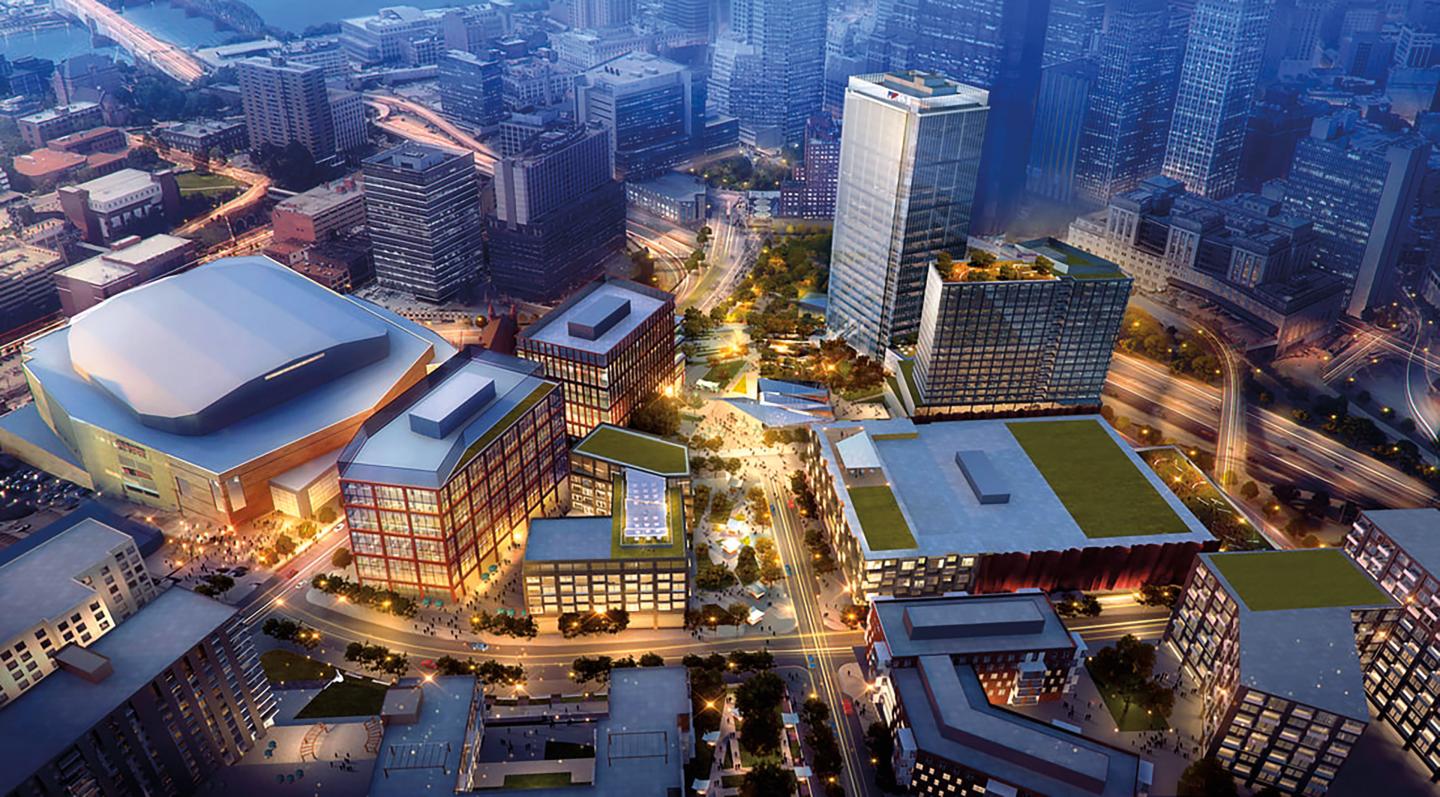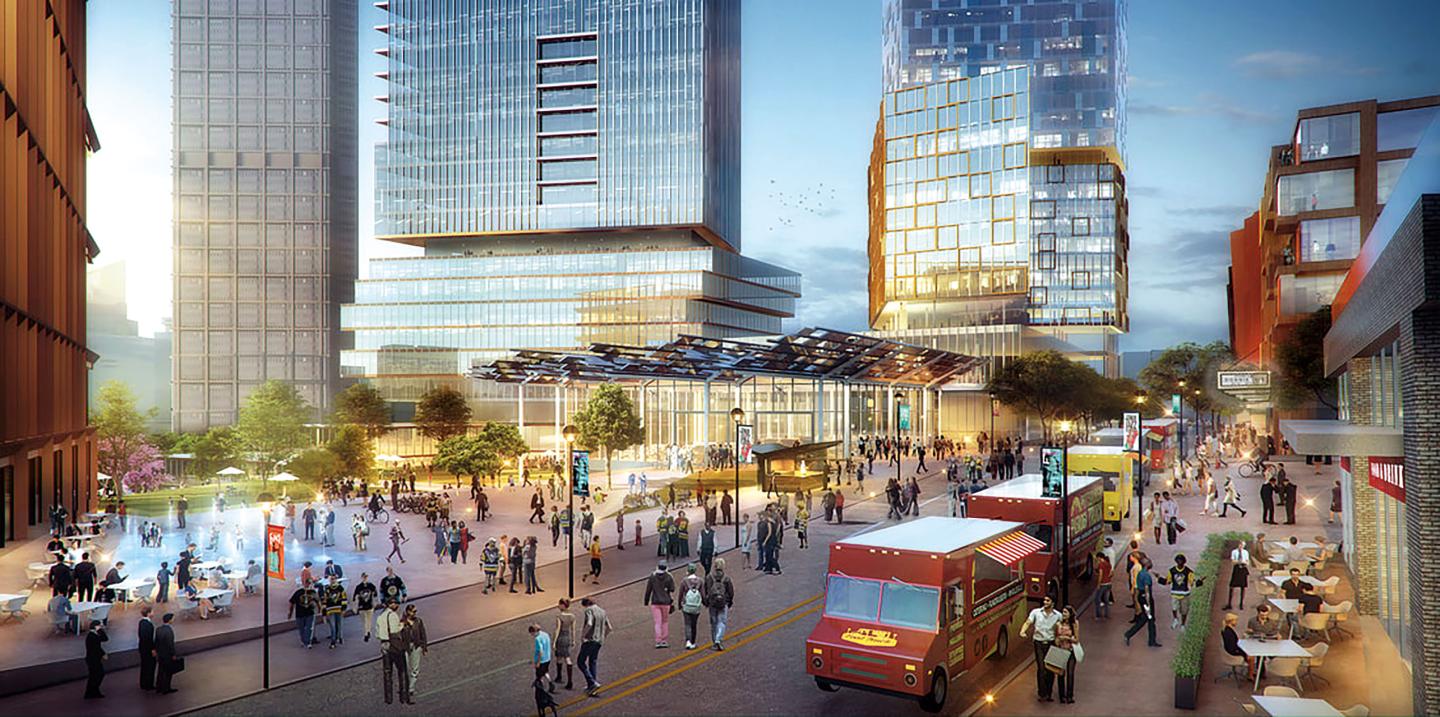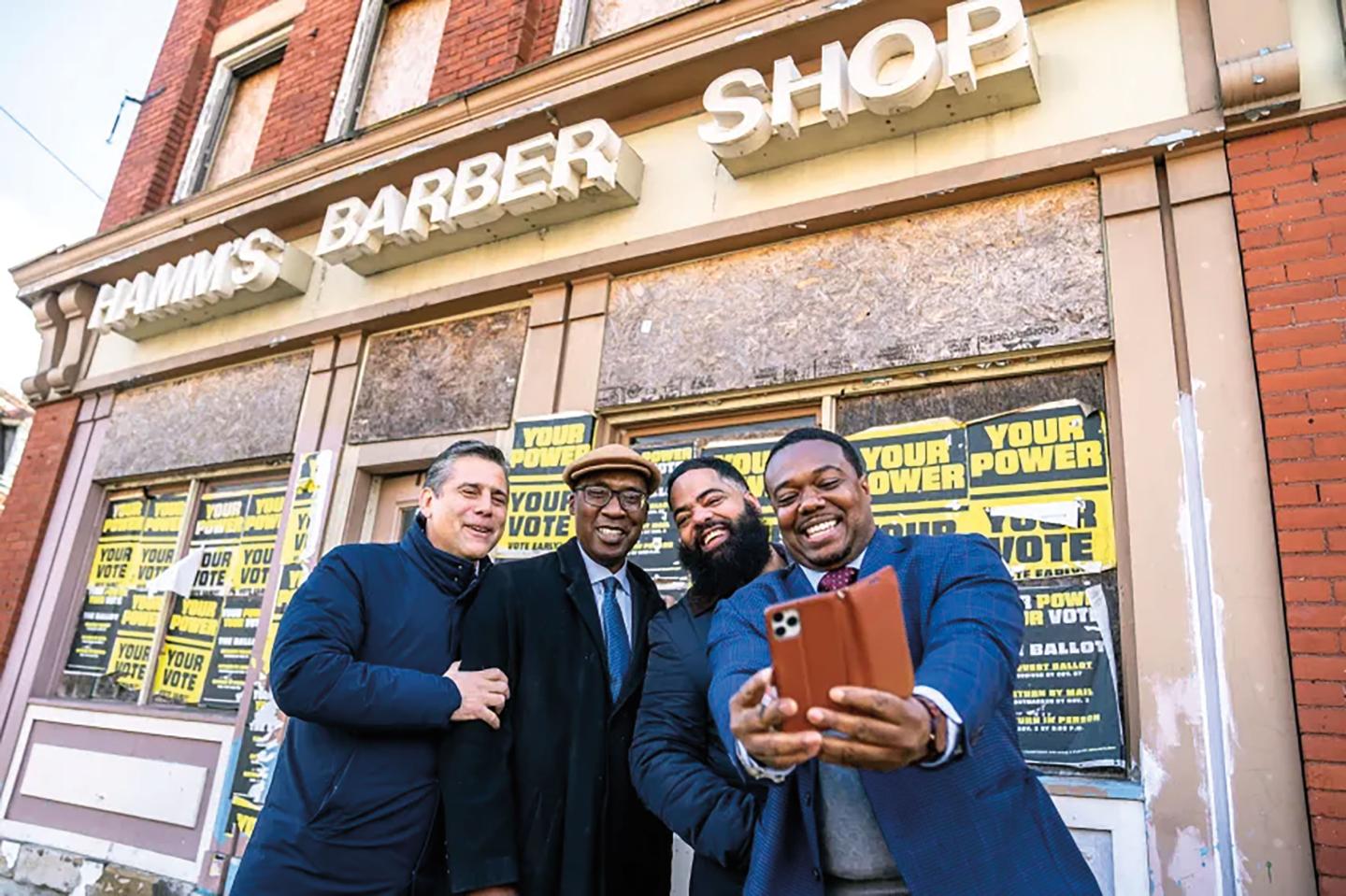A NATURAL FIT
Once completed, the redevelopment of Pittsburgh’s Hill District will represent the intersection of culture and commerce and will commemorate the history of a neighborhood and its residents. Ackah and Buccini both say their St. Paul’s School bond played a meaningful role in their decision to collaborate on the work. Hailing from Philadelphia and Delaware, respectively, the duo often saw each other on breaks during their years in Millville, extending a friendship that was forged in the houses and on the athletic fields of SPS. Over the last two decades, they have partnered on a number of real estate development and investment ventures, and when the opportunity to work together in Pittsburgh, relatively close to their home bases, came up, they jumped at the chance. The Lower Hill Redevelopment project was a natural fit for their mutual interests.
A seasoned investor and developer, Buccini, who graduated from Princeton, notably teamed up with Bill Taylor ’91 in 2011 to restore Wilmington’s historic Queen Theater. Prior to its grand reopening, the theater had been abandoned for more than half a century; it is now a thriving live music venue. Ackah attended Williams College and then earned his MBA from the University of Pennsylvania’s Wharton School. In addition to his role on the SPS Board of Trustees, for which he serves as the clerk/secretary as well as the chair of The SPS Fund, he also sits on the boards of the Philadelphia Museum of Art and Episcopal Academy in Pennsylvania. His Clay Cove Capital Partners is a private equity firm that invests specifically in real estate and development companies.
The first phase of the Lower Hill project launched in September 2021, with the groundbreaking of the $250 million, 26-story FNB Financial Center, which will become the corporate headquarters of First National Bank. According to the Lower Hill Redevelopment website, “the tower is expected to generate 1,250 construction jobs, 2,000 permanent jobs and $40 million in investments in the Middle and Upper Hill Districts.” And, Buccini shares, the FNB Financial Center is one of the first new office towers under construction in post-COVID-19 America. Mindful of evolving societal needs, it will feature touchless elevators and security, along with layered mechanical, electrical, plumbing and other systems that take sustainability into account.
The second phase will include a 1,000-space parking garage and a 3,500-seat Live Nation entertainment venue. In addition to being a LEED-certified project, the Lower Hill Redevelopment also is founded on the fundamentals of green construction, and its design includes seven acres of central open space to host large and small gatherings.
Equally important as the project’s commitment to sustainability, Ackah and Buccini both note, is that first priority of rebuilding a community that had previously only seen the downside of development. To that end, locals like Curtis Morehead are playing a pivotal role; his Emerald Electric Services is one of dozens of companies engaged with the effort. Emerald, which has done prior work on PNC Park, home of the Pittsburgh Pirates baseball team, and Heinz Field, where both the Pittsburgh Steelers and the University of Pittsburgh’s Division I football team play, so far has purchased the switchgear — components that control, protect and isolate power systems — and has supplied the lighting packages for the FNB tower. Four of the company’s 12 full-time electricians are at the site daily, overseeing and performing electrical work.
“We are really happy to have the opportunity to have that 28 acres coming back to life,” Morehead says, noting that the prospect of garnering maintenance and service agreements for the future means the project is good for the long-term viability of local businesses that will play a critical role in sustaining the Lower Hill.
“Amachie and I had a goal of [hiring] 30% minority- and women-owned businesses, and we’re at 32% right now,” Buccini says. “So we’ve created an infrastructure in our organizations that actually has really helped the smaller electrician who has never done something of this size, spending a lot more time and money to really help mentor them, partner them up with a bigger firm that could help them grow into the next career phase. That’s what we’re trying to do across the board.”
“We’re working on small jobs, but we’re also giving an ability for people to have basic financial literacy — understanding how to apply for a union job and be in the trades,” Ackah adds. “Looking at helping them turn a job into a career, maybe in one of our buildings after the construction is done.” He says that there also will be resources to assist everyone, regardless of race or ability.


